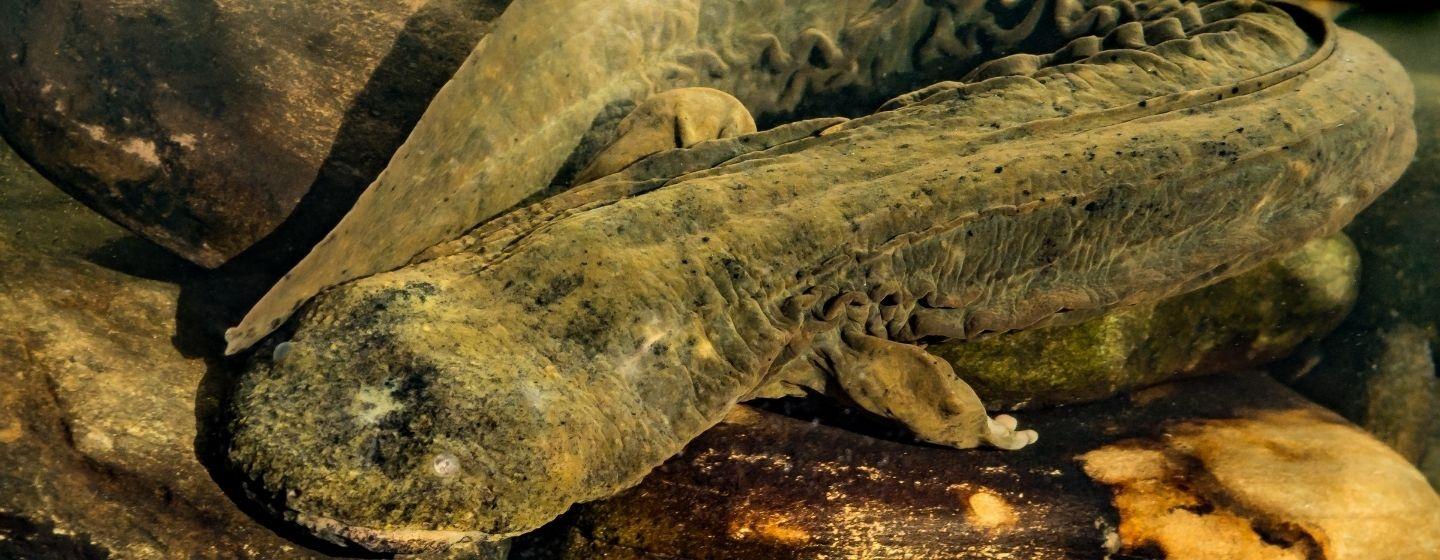An Iconic Salamander Species Struggles After Hurricane Helene


As cleanup from Hurricane Helene continues, people are finding evidence of the storm’s devastating effects on an iconic western North Carolina creature, the eastern hellbender salamander.
The North Carolina Wildlife Resources Commission (NCWRC) has received reports of people finding more than a dozen hellbenders at a time as they are cleaning up debris. Some are dead; some are alive.
“Initial reports are that hellbenders appear to have taken a major hit across multiple counties and watersheds,” Lori Williams, a biologist and hellbender expert with the NCWRC, told the Asheville Citizen Times. “People are reporting finding them hundreds of feet away from rivers, stuck in mud ditches, piles of storm debris and washed out in open fields.”
The eastern hellbender is one of three giant salamander species in the world. Weighing in at roughly three to five pounds and measuring up to two feet long, it’s the largest amphibian in North America and the largest salamander in the Americas.
The species is entirely aquatic. Hellbenders live in rivers with cold, clear running water and beds of large rocks all the way from Georgia to New York. However, they are disappearing from their environment largely because of human development.
In western North Carolina, however, hellbenders had been doing okay prior to Helene. The state considers the species “of special concern,” which means it requires protection and conservation. The federal government does not consider them endangered, but conservationists are in federal court trying to change that.
It appears the rushing floodwaters from Hurricane Helene destroyed hellbender habitats in many rivers, washing away large rocks used for shelters and nests. In some cases, the entire river habitat where hellbenders lived was damaged or destroyed.
Floodwaters also sent runoff pollution of fuel oils from factories and roads and fertilizers from farms as well as mounds of sediment into rivers. That sediment can bury hellbenders’ food supplies and nests.
On top of that, the floods caught the species in the middle of its breeding period.
“We anticipate habitat damage and destruction in most watersheds meaning loss and displacement of shelter rocks, nest rocks, and nests themselves, which would have had eggs soon to hatch this time of year,” Williams added.
However, Watauga County Riverkeeper Andy Hill of the nonprofit MountainTrue offers some hope.
“While we are worried about them, we know the rivers are resilient and timeless. The rivers will come back. It just might be a long process,” said Hill.
If you find a hellbender displaced by floodwaters in western NC, NCWRC recommends the following actions:
In response to Hurricane Helene, PBS North Carolina is working with state and local officials to share critical information and resources.
For more information, please visit the NC Department of Public Safety’s website.
VISIT NCDPS.GOV >
To learn about the endangered Neuse River Waterdog salamander, watch this Sci NC story from 2022. Fortunately, it was not affected by Hurricane Helene.